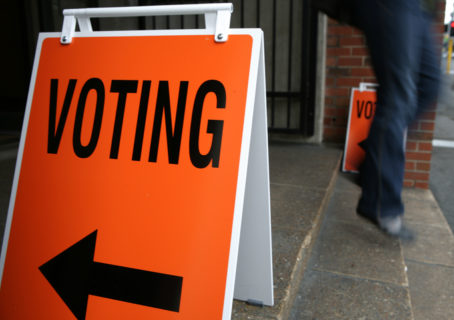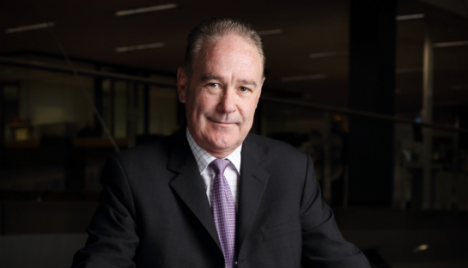2022 will be an election to boost our industry – regardless of who wins
The first half of 2022 is going to see ad inventory fly off the proverbial shelves and the brands that are ahead of the game will be the ones that benefit as we head into the second half of the year, writes Barry O’Brien OAM.
The silly season is fast approaching.
A federal election is set to take place some time between now and May 21.
Add in a six-week period, give or take, between the prorogation of Parliament and the actual election day, and we can likely predict an approximate 10-week window for the election to fall, between March and May.
It’s a prospect that will have media organisations the country over licking their lips – and not, necessarily, because it allows them a chance to see the party they prefer seize or remain in power.
While our major networks, newspapers, outdoor and radio stations all have a certain political bent, it’s doubtful any of them are looking too far beyond the feeding frenzy that is the campaign period itself.
It shapes as a smorgasbord that will help some particularly skinny organisations put a bit of meat on their bones after 24 months of Covid-enforced fasting.
Because, regardless of who ends up sitting to the right of the Speaker after the nation has spoken, an election is a teat from which all the media will feed.

According to Nielsen, the 2019 election saw a record $81.8 million spent from September until the fateful day of May 18 when, against all odds, Bill Shorten went down swinging in ‘the unlosable election’.
While there were myriad complex reasons the former Australian Workers’ Union National Secretary failed to topple Scott Morrison, one of the most prominent factors was as simple and powerful as they come.
Money.
That said, it wasn’t the case that the ALP’s war chest failed to match up to that of the Coalition’s, with their respective spends relatively similar at $13.3m and $14.5m respectively.
Rather, the joker in the pack was the deep pockets of Clive Palmer, who lived up to his party’s pre-election promise of spending “in excess of $50 million”, with the United Australia Party (UAP) ending up splashing out a massive $53.6m.
And though the UAP’s failure to gain a single seat would indicate that this was a spectacular waste of money – even if the billionaire barely noticed the dent in his bank balance – Palmer was claiming victory based on his partisan advertising drive keeping Labor out of power.
“We thought [Shorten as prime minister] would be a disaster for Australia so we decided to polarise the electorate and we thought we’d put what advertising we had left … into explaining to the people what Shorten’s economic plans were for the country and how they needed to be worried about them,” Palmer told ABC radio in Queensland in the aftermath.
Motivations aside, it’s worth taking a moment to reflect upon how much Palmer has upended the media landscape come election time, with an ad spend almost double that of the ALP and Coalition combined.
To put it in perspective, according to The Australian, Palmer dropped just $100,000 in the 2016 election, a campaign that saw the Libs spend $8.7m and Labor $6.3m, for a total spend across all parties of just $15.9 million.
It illustrates the massive shift Palmer has caused.
Again, there are myriad factors that led to such a large increase in media spends for the two major parties from 2016 to 2019, but when a minor party is splashing out in such a major way, dominating the airwaves, print, outdoor and screens, the Libs and ALP needed to open their wallets as well if they wanted their messages to receive any attention.
This, inevitably, has knock-on effects on the broader industry, because it’s not as though election media exists in a vacuum.
In just three years, election ad spends jumped from $15.9 to $81.8 million – an increase of more than 500% – which obviously far outstripped any uptick in audience or ad availability.
So suddenly it’s not just the other political parties fighting for the scraps after Clive has gorged himself, it’s any company in the country that wants to keep advertising.
According to The Guardian, citing a report compiled for the ALP about Australia’s top advertising spenders from June 2018 to May 2019, “The UAP was sixth on the list, with a spend of $67m – bigger than the banks, Sportsbet, Telstra, Bunnings, Coles, Toyota and McDonald’s. No other political party made it to the top 50.”
But you can’t let that scare you off – brand and retail need to get into the mix.
And they should start now, because in the months ahead of election campaigns starting in earnest, we’ve got some major events.
The Ashes series will be even more closely watched with a new captain at the helm for Australia. In January there’s the Australian Open tennis, which will have the Winter Olympics coming hot on its heels.
There will be plenty to watch and read about.
Meanwhile, most of the country will be reopening for the first time in months, with people eager to get out of their homes. So whether they’re on foot, in cars or just generally out and about, people embracing the opportunity actually to walk out their front door is going to see outdoor come back to the fore.
All of which means now is the prime time to create brand recognition, before the political parties pounce on the available media, collectively becoming one of the largest advertisers in the country.
The first half of 2022 is going to see ad inventory fly off the proverbial shelves and the brands that are ahead of the game will be the ones that benefit as we head into the second half of the year.
So while it’s not the silver bullet for two extremely tough years, the upcoming election shapes as being critical in restoring the media landscape – regardless of who ends up taking power in the House of Representatives.

O’Brien
Barry O’Brien OAM is Australian independent media agency Atomic 212° chairman & founding partner.


Agreed and well said.
Great article Barry, well written.
Will be interesting to see if. in the forth coming election, Clive continues to once again erode our ‘democracy’.